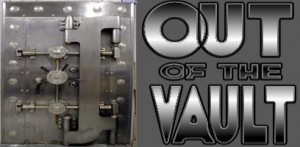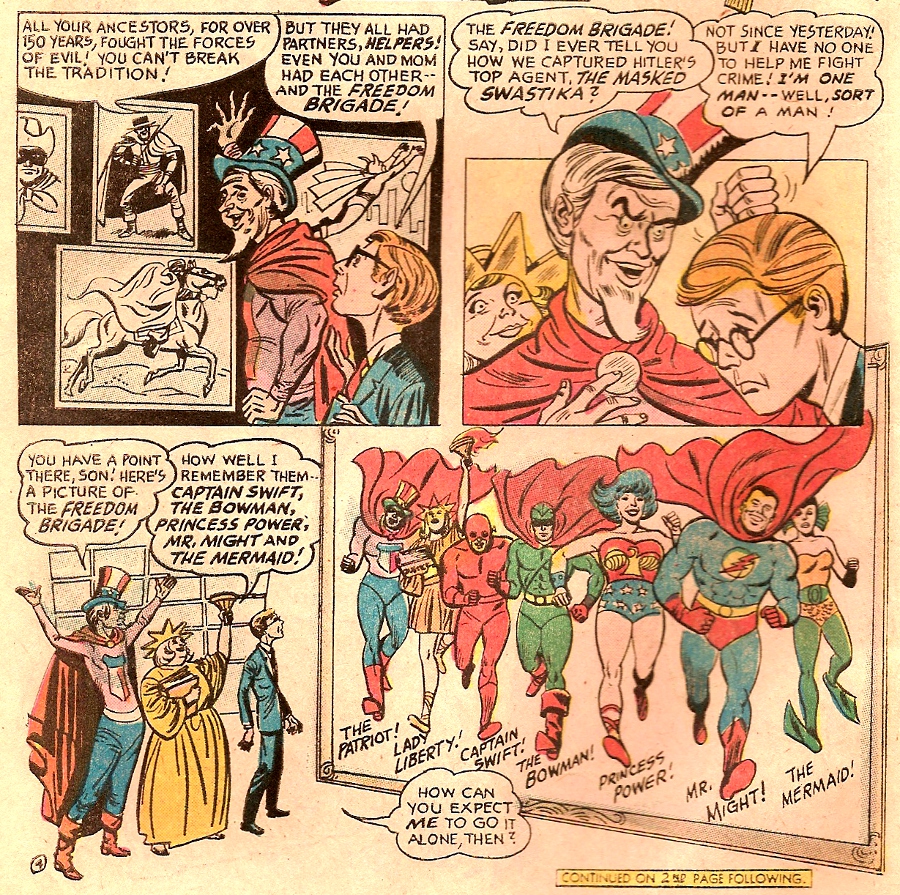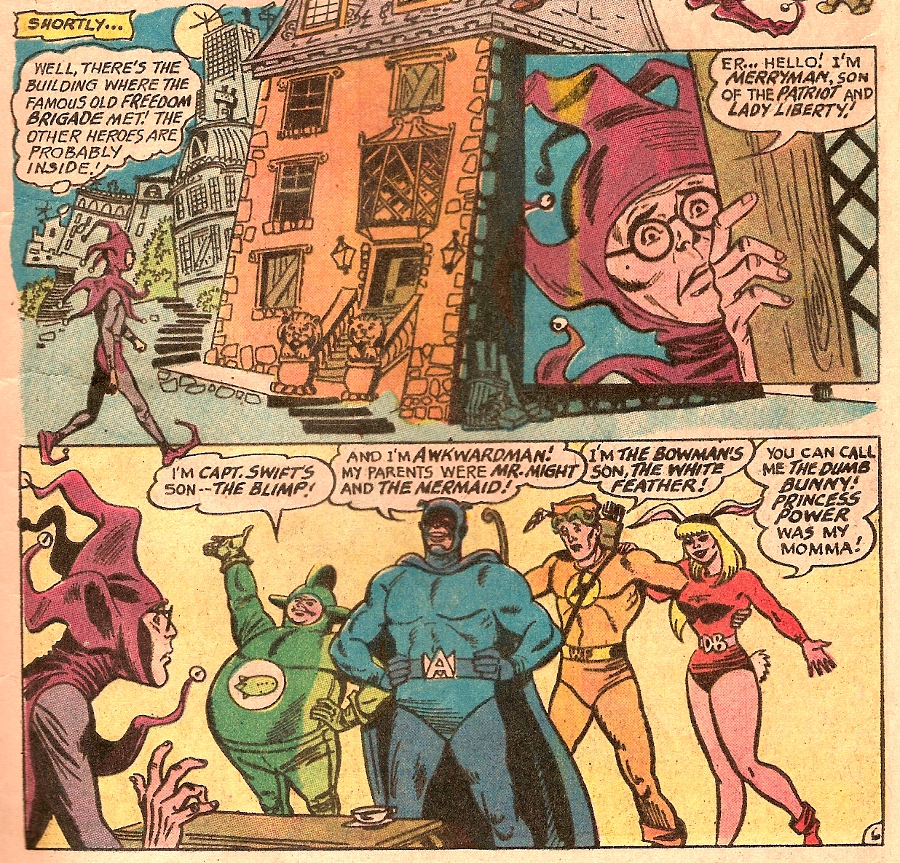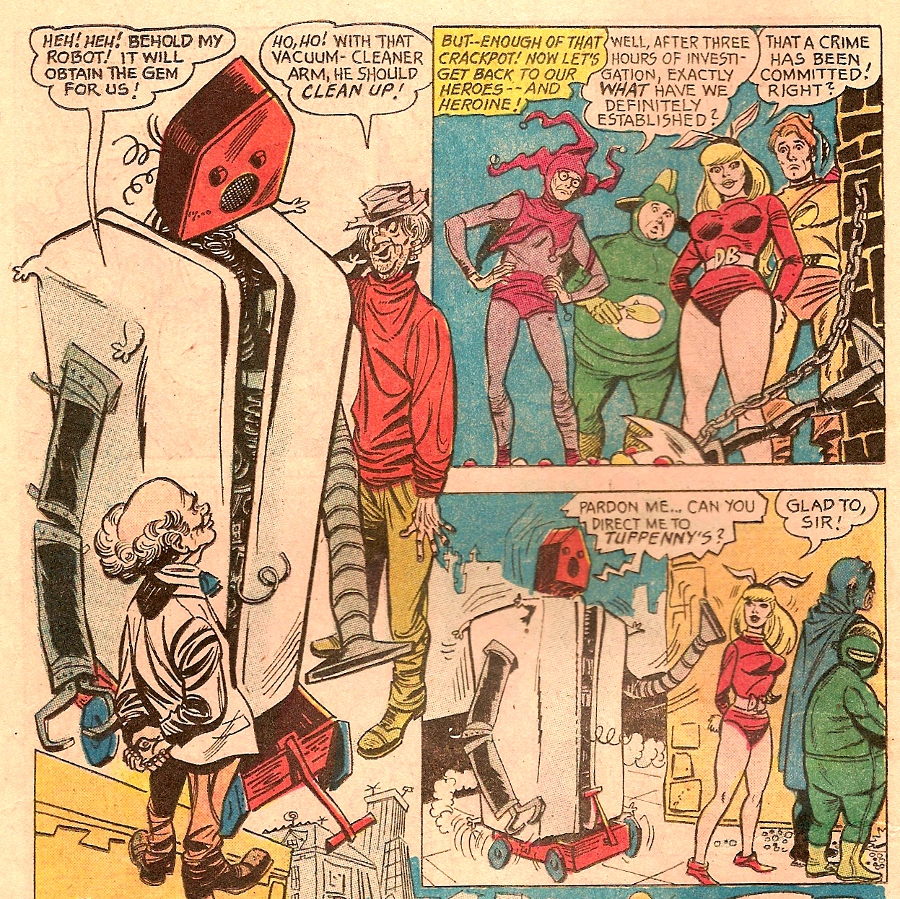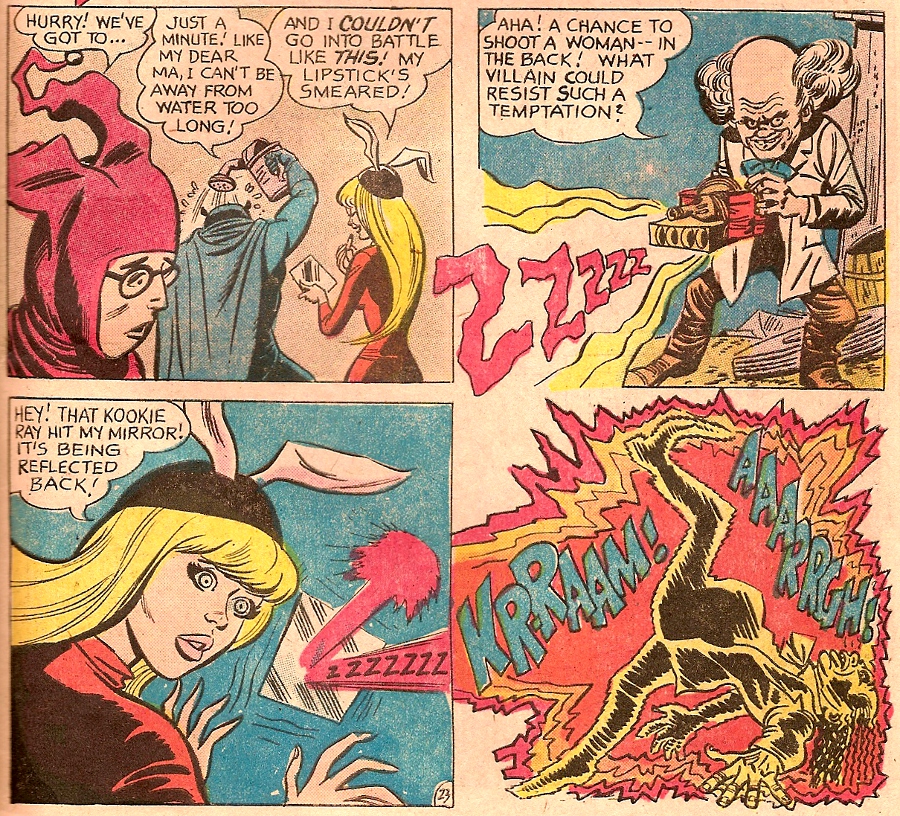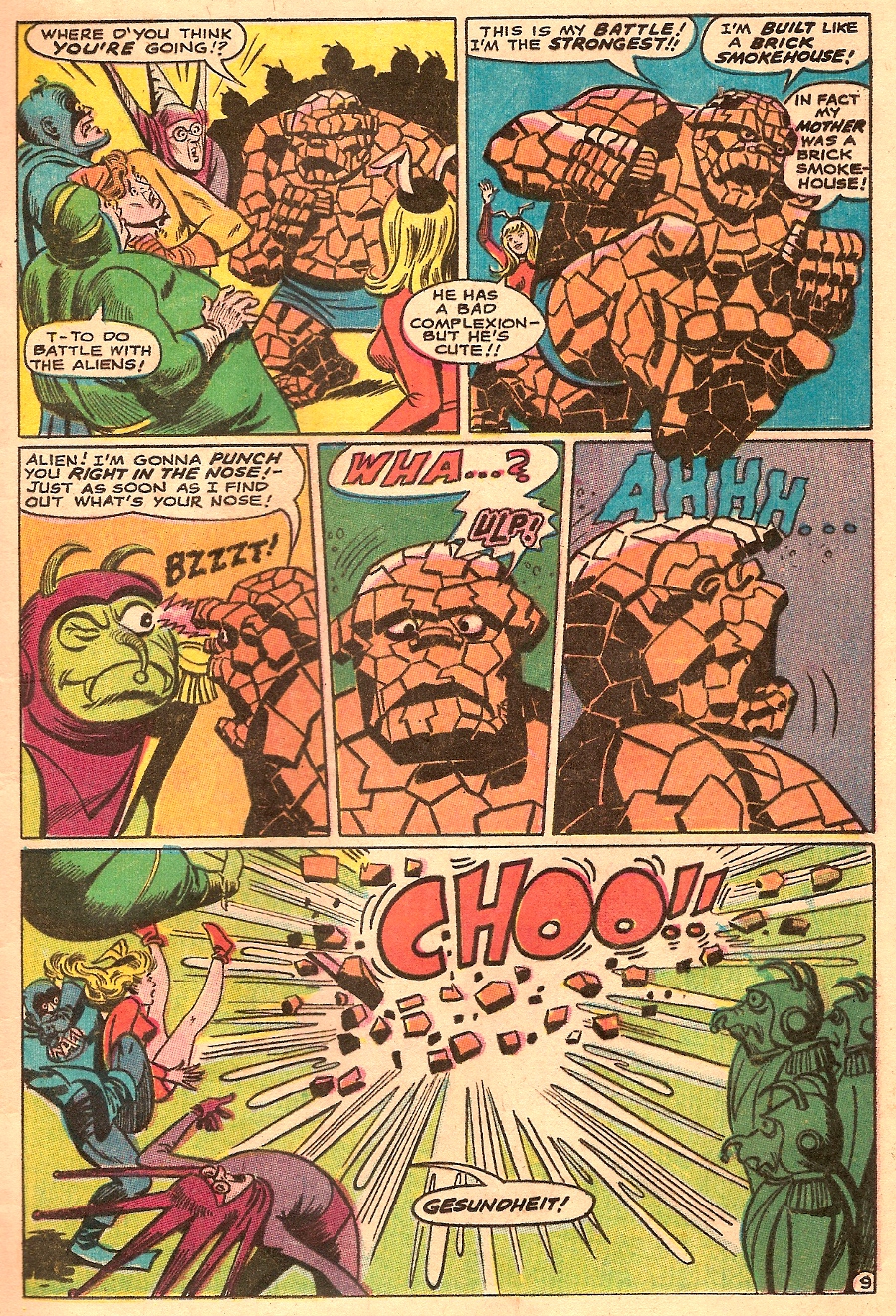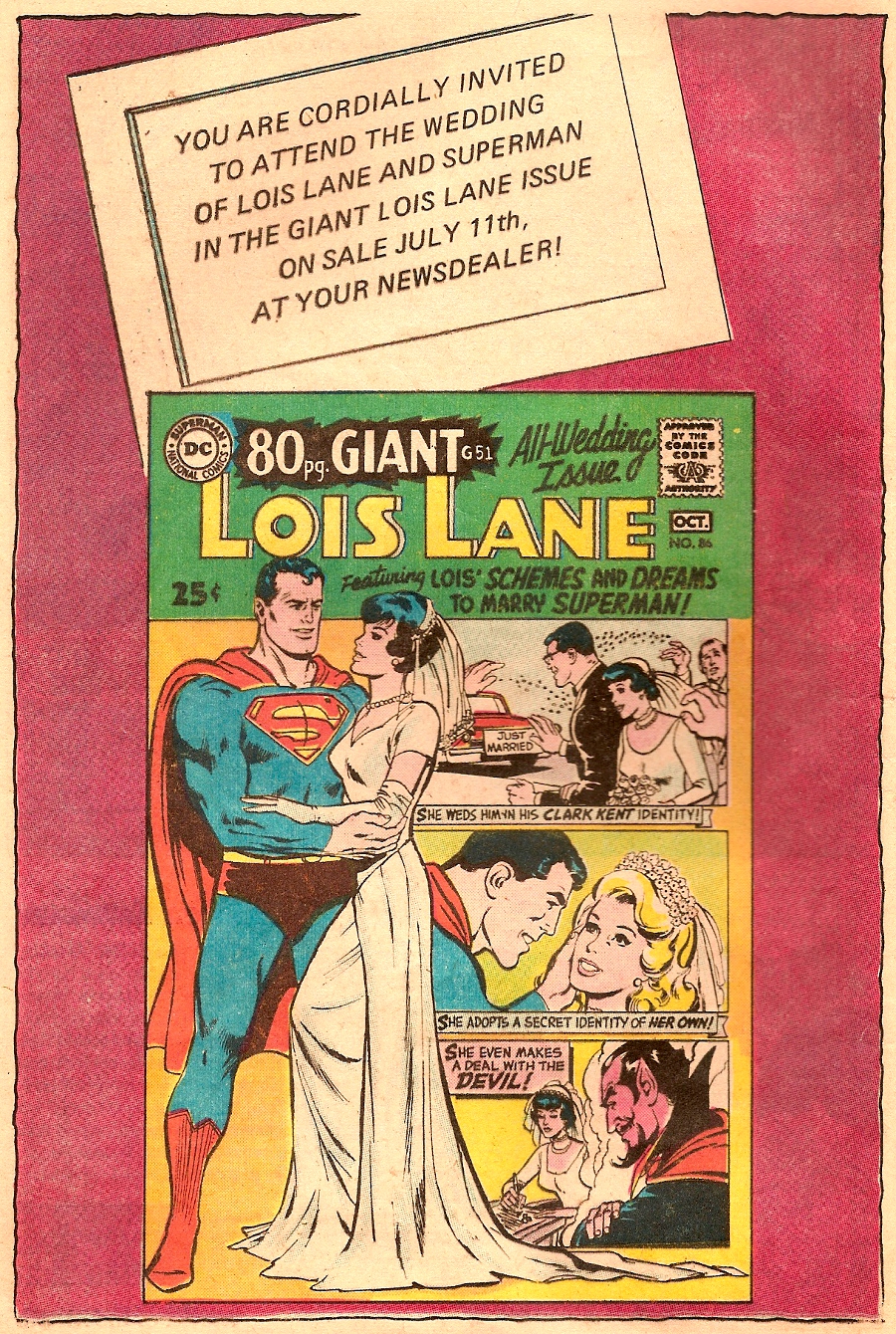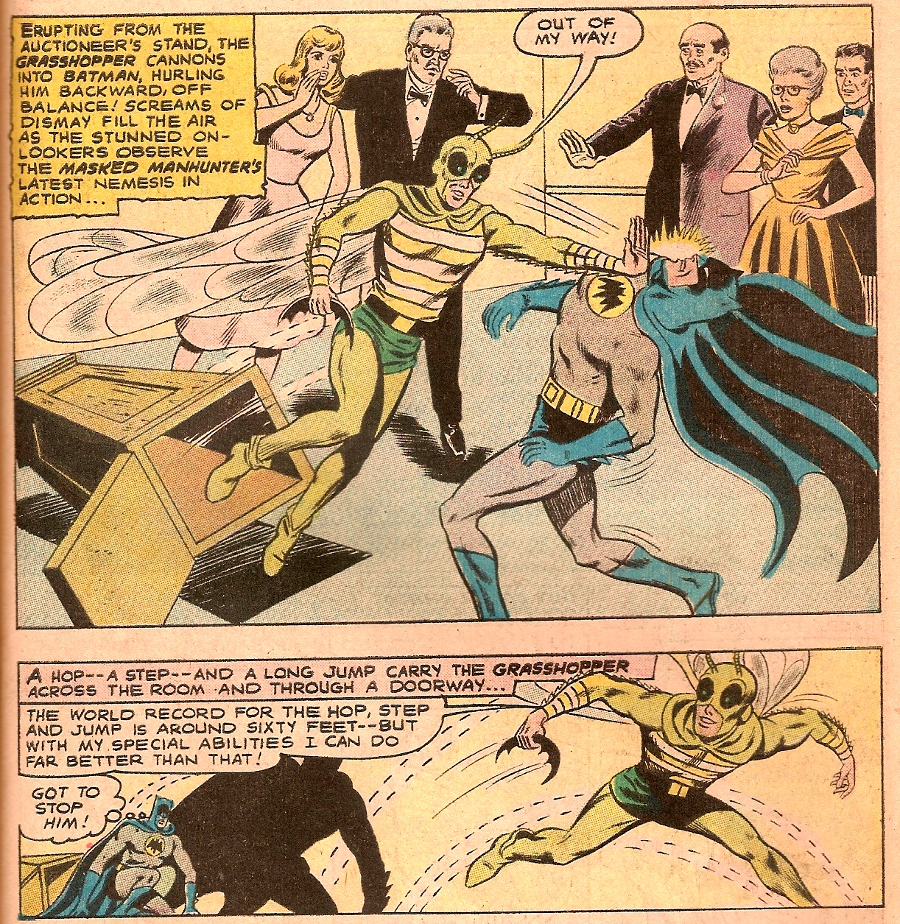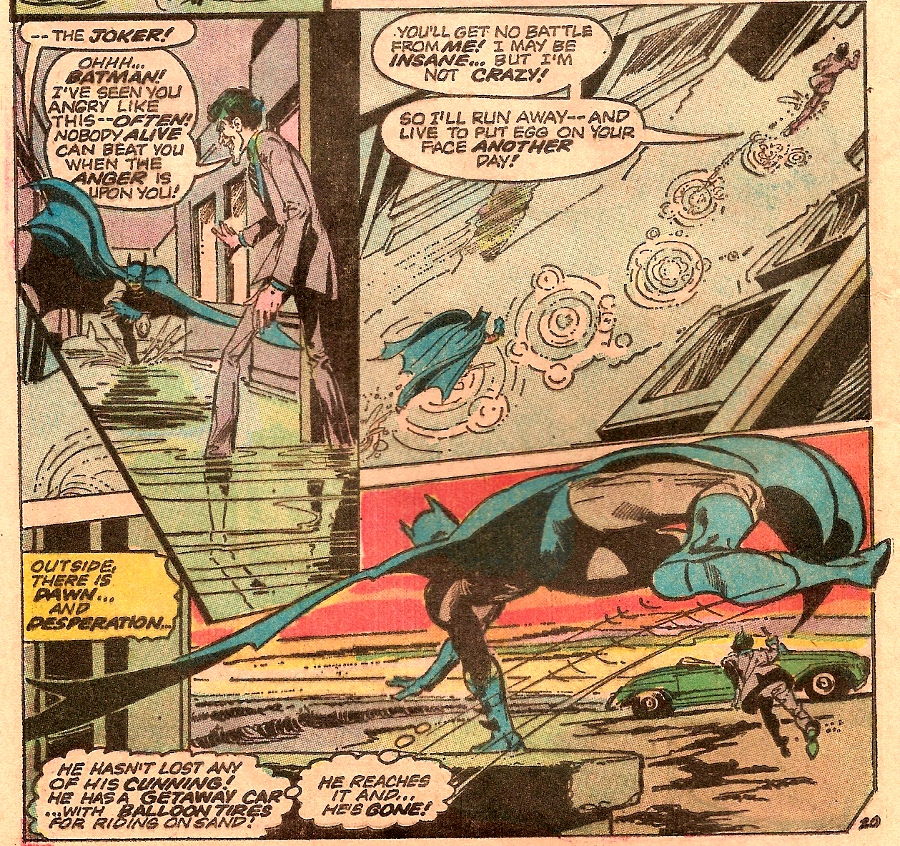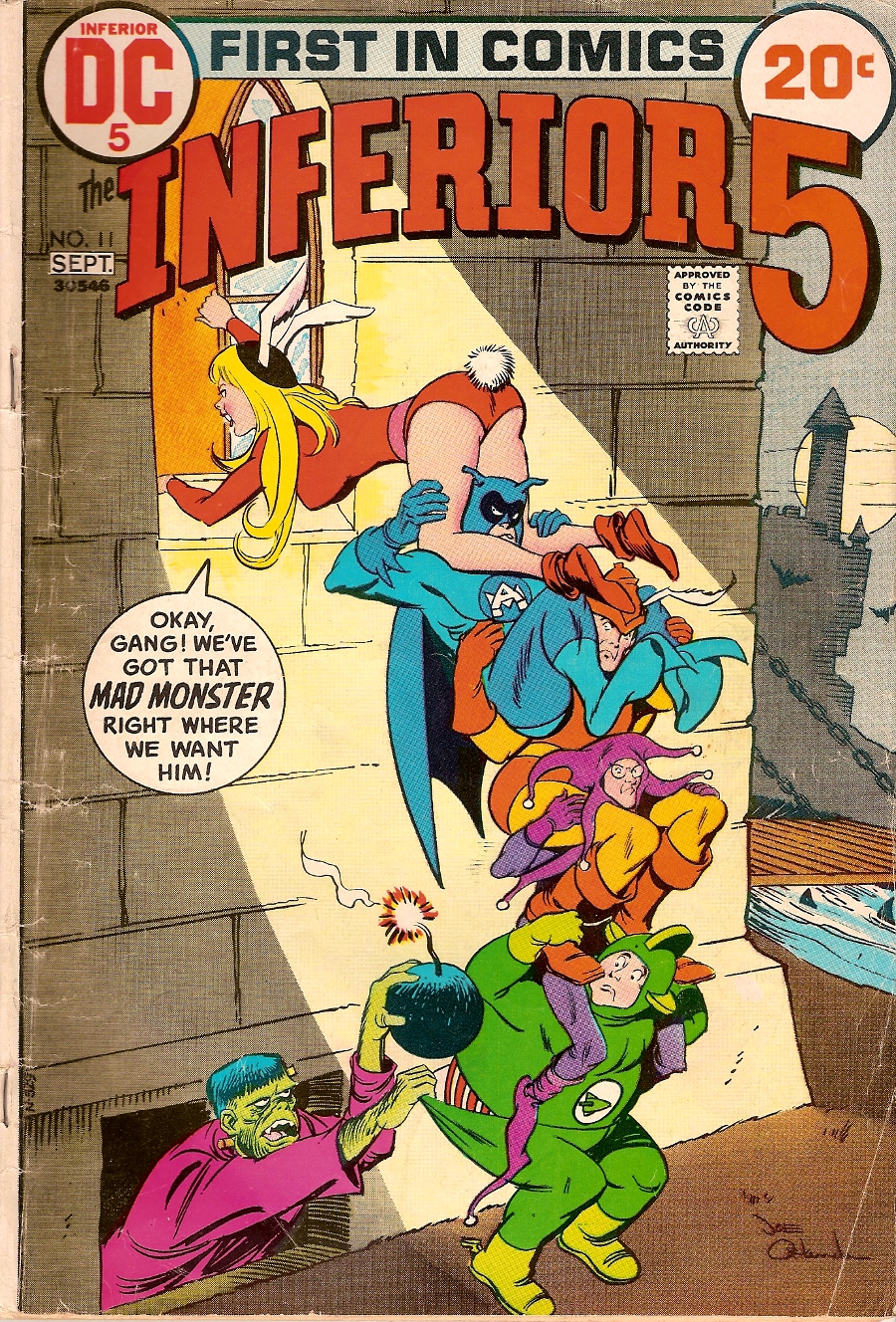 Sorry this is late. I’m having technical difficulties with my house.
Sorry this is late. I’m having technical difficulties with my house.
On Monday, I mentioned The Toad, an X-Men villain who wore a lame jester-style outfit. Every now and then, somebody tries to bust out the jester look on a hero, and it’s always lame. At least in today’s title, it was meant to be.
The Inferior Five was a superhero parody series that debuted in 1966 in DC’s Showcase, a book that DC used to audition new properties and see if they merited their own titles. I was introduced to the group in issue #11 of their own title, The Inferior 5 (at some point, they had stopped using the word “five” in favor of the numeral), published in 1972.
But it turns out that the story appearing in that issue was a reprint of the group’s original appearance in 1966, written by E. Nelson Bridwell and drawn by Joe Orlando and Mike Esposito. Older fans might remember Orlando’s work from Mad and Creepy, while younger fans might remember that he was credited as the original artist for the early issues of the (nonexistent) Â pirate series, Tales of the Black Freighter, featured in Alan Moore’s Watchmen.
As the story begins, a police informant overhears a mad scientist in a supposedly abandoned junkyard plotting to build a death ray machine. All he needs is to steal a certain special ruby. The informant tells the police, who relay the news to the Freedom Brigade, the world’s mightiest superhero group which has long since retired.
Luckily, they all have kids. Unfortunately, skinny Myron Victor there is typical of the lot, having fallen as far from the tree as possible. It’s more like he was the apple that got thrown by the tree at a certain insulting girl from Kansas. Talked into joining up with the other super-spawn, Myron visits his parents’ costume guy and tells him to make a jester’s outfit. “As long as I’m going to make a fool of myself, I might as well look the part.” And so…
Turns out none of the apples even landed in the orchard. Awkwardman has his father’s immense strength and his mother’s flippered feet. The Blimp can fly, if by “flying,” you mean, “hover and waft.” White Feather is scared of everything. And Dumb Bunny, well, she’s blonde.
But despite their obvious shortcomings, the group decides to band together and call themselves The Inferior Five at Myron’s suggestion. Â And soon, they meet their first nemesis, the mad scientist from scene 1. Unfortunately, he doesn’t have the finances of someone like Luthor, so he has to make do with scraps from the junkyard for his evil inventions, like this robot made from a couple of cast-iron bathtubs, some vacuum cleaner attachments and an old radio.
Of course, even though their attacks go horribly awry, their weaknesses manage to work together to defeat the robot. Then they track down the scientist, who has built a murderous vehicle, which they also accidentally take down. And in the meantime, the scientist’s assistant has swiped the ruby, so now the evil genius can build his death ray.
That’s right, beaten by a woman’s vanity. How 60’s.
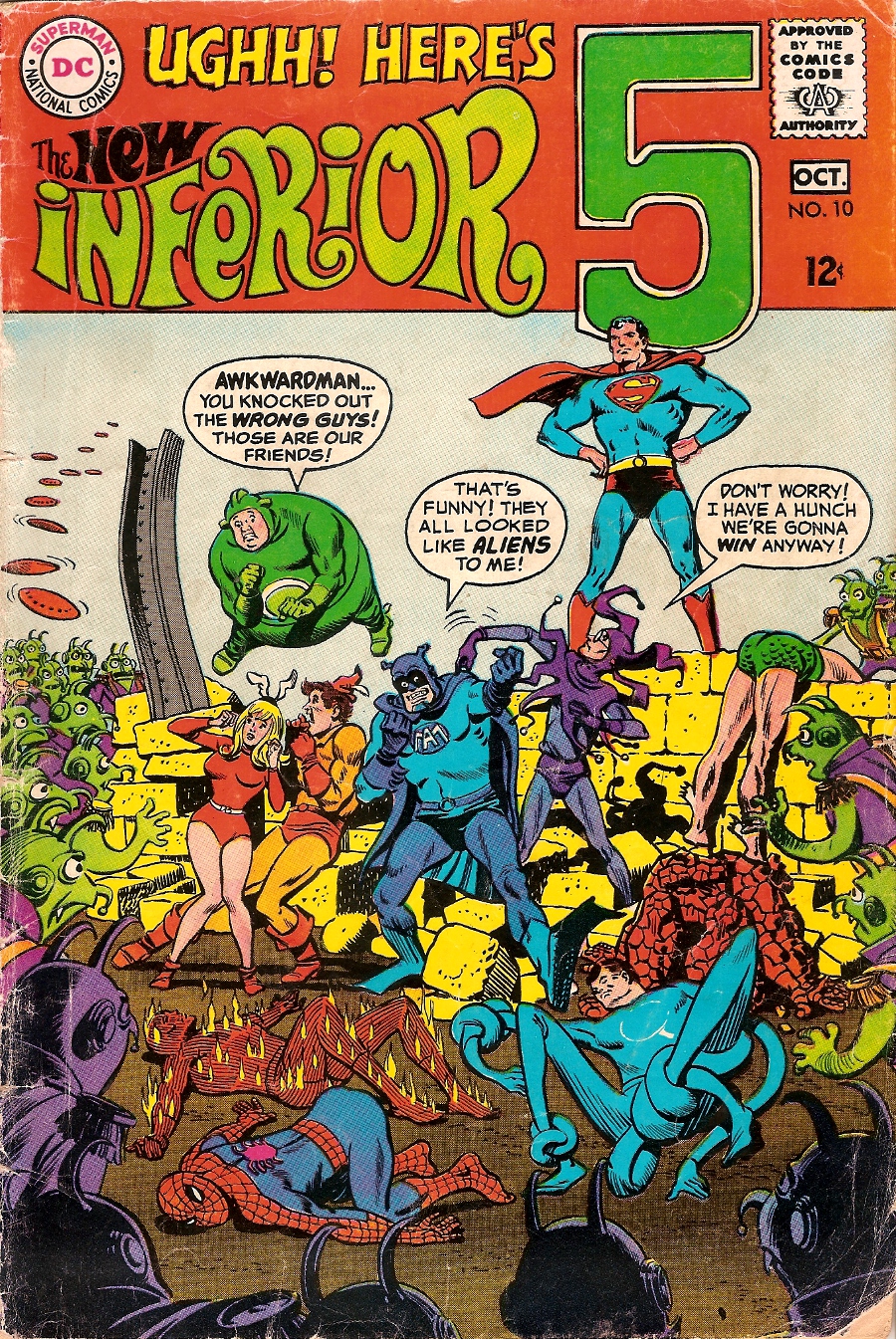 The story wasn’t horrible as these things go. Orlando and Esposito do a good job on the art, and there were some good gags. Â But the Five’s revival lasted only one more reprint issue before they were cancelled. And frankly, it wasn’t surprising. I could stomach reprints as back-ups and fillers, but I always felt baited and switched when I got a whole book of them ( like Legion of Super-Heroes).
The story wasn’t horrible as these things go. Orlando and Esposito do a good job on the art, and there were some good gags. Â But the Five’s revival lasted only one more reprint issue before they were cancelled. And frankly, it wasn’t surprising. I could stomach reprints as back-ups and fillers, but I always felt baited and switched when I got a whole book of them ( like Legion of Super-Heroes).
But that wasn’t my last exposure to the Inferior Five. A couple of years later, I ran across an old issue from 1968 in a thrift store and nabbed it. The story concerns an alien invasion that overwhelms the forces assembled to fight it, including not only the Inferior Five (who in the intervening 10+ appearances have started calling themselves the Fearless Five and getting offended at the use of their original name), but a slew of other heroes who are breathtakingly blatant parodies of Marvel characters. Their names are different, but they are drawn almost exactly the same (the Fantastic Four stand-ins have a ‘Q’ on their chests instead of a ‘4,’ and the faux Spider-Man has no spider insignia on his chest, but they are otherwise identical).
The story is a lot more aggressively gag-filled than the group’s initial appearances, with the plot taken from a Legion of Super-Heroes story that appeared in Adventure Comics #367 (April, 1968, six months before this story was published), in which the Legion fought an overwhelming invasion of Earth by clones of the Dark Circle.
But that’s not the thing that really got my attention about the issue when I revisited it. It’s the number on the cover. This was issue number 10, published in 1968. The issue #11 published in 1972 wasn’t part of a different series, it was literally the next one, with a four-year hiatus in between. Suddenly a few Digger-free months aren’t looking so bad.
But that’s not the real reason I’m writing about it now. When I picked up that reprint issue in 1972, the 9-year-old me thought the story seemed incredibly old, even though it had been first published only six years before. Now, as kids, we have very different scales for measuring time; six years then was two thirds of my life, after all.
But even so, it felt old in a way that say, Firefly–which has been off the air for longer than the gap between that first appearance in Showcase and the reprint–doesn’t. And a clue to why that was appears in an in-house ad in issue #10.
Not talking about the 60’s sexism. It’s the art. That cover was obviously drawn by Neal Adams, the legendary comics master who at the time was a rising star at DC [ETA: Looking at it again, I’m thinking it was not drawn by Adams, but by Dick Giordano, who inked a lot of Adams’s most famous work and whose work looked very similar at times]. Or I should say, he drew all but one part: Superman’s face in the standing portrait at left. It’s in a completely different style than even the Superman profile in the middle panel at right, which was drawn by Adams. It was probably redrawn by then-Superman artist Al Plastino, who was ordered to do similar work to Kirby’s renditions of Superman in the pages of Superman’s Pal, Jimmy Olsen.
And perhaps no other pair of images quite illustrates the divide between the old DC of 1968 and before, and the new DC of 1969 and after, between this from 1964…
And this from 1973…
DC underwent a complete sea change between that first appearance of the Inferior Five and its reprint, and you could see it at a glance.

